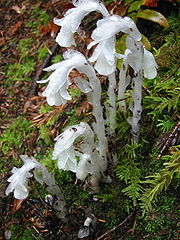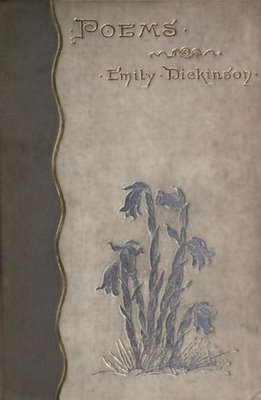
White as an Indian Pipe
Red as a Cardinal Flower
Fabulous as a Moon at Noon
February Hour–
Fabulous as a Moon at Noon
February Hour–
Emily Dickinson (1250, year 1873)
If you have ever seen Indian Pipe–white and waxy–growing like some walking dead thing under the pines, hidden among the debris of fallen leaves, left over from the previous summer, rebuilding the earth that has become their final gesture to their woods and forest. It’s gorgeous and haunting. Its other name is “corpse plant." Indeed, they have a hauntingly somber aspect, attracting and still repelling you by their death evoking appearance. They also do not want you to disturb their resting/growing spot. If you do, they will not be taken peacefully. When you pick them they get back at you by turning black! That glowing whiteness that so attracted you will turn brown, not necessarily wilting or shrinking but disappearing and the only thing that is left for you to do...is place them back on their leaf bed to be subsumed.
Emily Dickinson’s first book of poetry, published posthumously, has the Indian Pipe on it's cover.

The flower on the cover was done by Mabel Loomis Todd (Emily’s brother’s long-term lover and fascinating woman in her own right. She and Austin are the reference in my previous post when I mentioned the path being, just wide enough for two lover to meet upon.) Mabel Loomis Todd painted her a picture of these flowers sending it to her to which Emily wrote back her thanks, “That without suspecting it you should send me the preferred flower of life, seems almost supernatural, and the sweet glee that I felt at meeting it, I could confide to none”
From pages 172, 173, and 174 of Marta McDowell’s book, Emily Dickinson’s Gardens, McDowell writes in length about the Indian Pipe. Besides discussing its importance to Emily, she also gives a primer on the flower itself. “The Indian pipe (Monotropa uniflora) is an unusual plant, visually and botanically. It looks like a waxy albino stem of lily of the valley, completely white and leafless….it is an angio sperm, a flower plant, but one incapable of photosynthesis. Unlike the green growing things around it, it can’t manufacture its own food but relies on symbiotic relationships.” McDowell wonders too if this is not referential to the "virgin in white" that we've come to think of when thinking about Emily and her reclusive life at her home in Amherst.
I use to see these in and around the Berkshires, where my sister lives, when I was able to travel. We don't get them here in the city...so if some of you find yourself walking in the woods out in the Northeast, look down, maybe you'll find a little ghost among the leaves, peaking out daring you to see but not touch. I've also been thinking that this might make a lovely white on white cloth for stitching. Ah, to be continued...
And now for the grand finale....
































.jpeg)
























very interesting plant. i googled it and saw some close-ups. it is quite beautiful. it seems that it grows a tap root that allows it to get food from certain trees and fungi.
ReplyDeleteInteresting to read more about this unusual plant. Thanks Henrietta. Love your header BTW.
ReplyDeleteVery interesting that Emily Dickinson's book would have the Indian Pipes on the cover. I have never heard of this plant but will google it to learn more. We have a plant in Canada called Indian Paint Brush. It is brilliant red and it also does not like to be picked.
ReplyDeletehappy tofurkey day from a fellow vegan, ani! yesterday we watched wild turkeys (8 of them) as they attempted to interact with our cat. oh! they appeared to be enjoying themselves!
ReplyDeletei love the idea of a white on white piece with the indian pipestem... that seems perfect and powerful to me.
xoxo
looks like the ghost of another plant
ReplyDelete